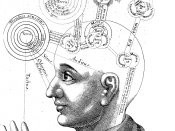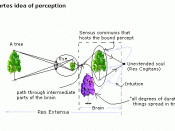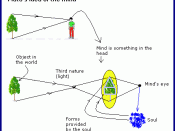Philonous, in Three Dialogues between Hylas and Philonous, attacks Hylas arguments toward the distinction between primary and secondary qualities. The distinction between primary and secondary qualities is a peculiarity between qualities which depend for their existence on the relation between an object and a perceptual device. An example of this would be smell and color, which has properties that an object has independently of any perceiver.
What objectively, with out bias, exist and what merely subjectively exist? When something is clear and distinct it is true, and when it is not clear and distinct, like sensations that can be interpreted differently, it is false. Berkeley rejects this notion of primary and secondary quality distinction, which implies that material things exist independently of us.
Philonous continues to argue against Hylas when he explains that sensible things are defined as those things that are immediately perceived; therefore, eliminating mediated perception.
He gives a case by case examination of sensible qualities; such as heat and cold; sound; and colors. None of these qualities contain the ability of pleasure or pain independently because that is an identify we give it; therefore we give it its existence. He rejects Hylas claim that heat is motion, and he also proclaims that color varies with light. Philonous reminds Hylas that causes of ideas are not immediately perceive, and thus are not perceived at all; this makes them non- "sensible things".
Berkeley aimed to demonstrate that materialism is artificial because we have no reason to believe in the reality of mind autonomous material objects. He attempted to prove that we have no immediate perception of mind-independent material objects, so we have no source on which to assume the existence of mind-independent material objects from our instant experience. One can not imagine of primary qualities in objects...


